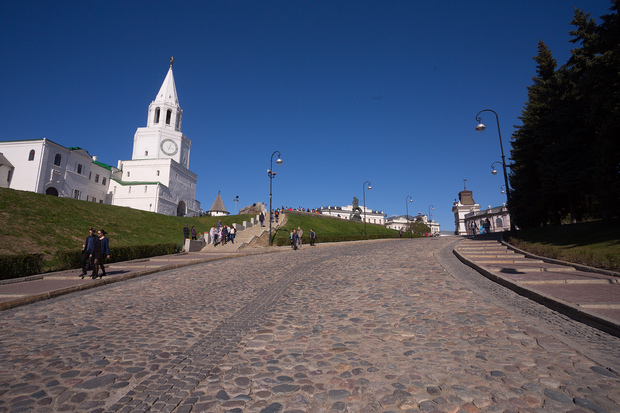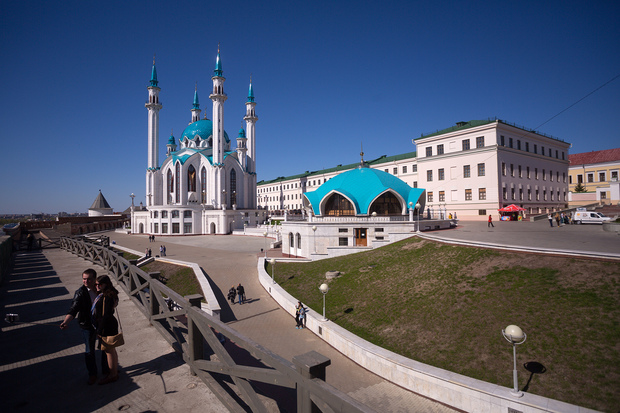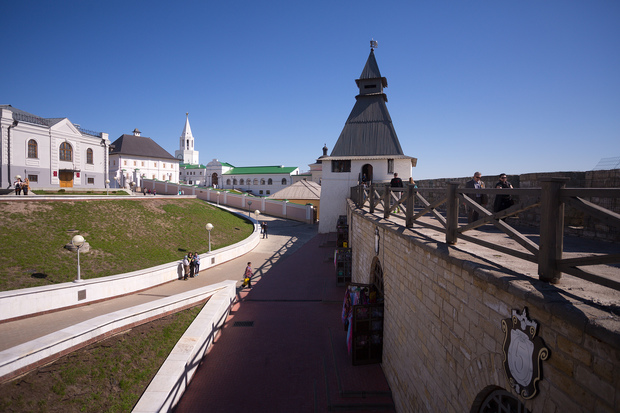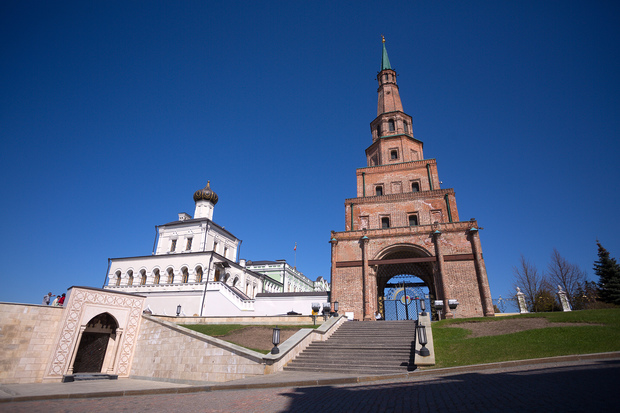Not only Sviyazhsk: ''outstanding universal value'' of Kazan Kremlin to be explained in Poland
UNESCO session taking place in Kraków will make important decisions for Tatarstan
The issue of whether the island-city of Sviyazhsk will be a World Cultural and Natural Heritage Site is discussed now in Kraków at the 41 st session of the UNESCO World Heritage Committee. However, this session can be interesting for Tatarstan not only for this reason – the outstanding universal value of the Kazan Kremlin will be considered and formulated during its work. In a column especially written for Realnoe Vremya, Vice-Rector of the Kazan Institute of Culture, Rafael Valeyev explains why this value is given to this site only now because it has been in the World Heritage Site List for 17 years and reminds about changes that have taken place in the Kazan Kremlin in the last ten years.
Almost 20-year delay
First of all, I need to explain why such part of documentation prepared to include the site to the World Heritage List as explanation of its outstanding universal value that became habitual and indispensable was not added to the nomination dossier of the Kazan Kremlin in the beginning. In 2000, when its inclusion in the UNESCO list was considered, such a concept simply did not exist. The idea of the necessity to create a concept of the outstanding universal value had already been in the air for many years by that moment, UNESCO and ICOMOS experts could not come to a conclusion what it should have. They managed to complete the work in this area only in 2005. Curiously, it happened in Kazan during a special meeting of experts on the World Heritage Convention. It was carried out on the initiative of a group of scientists who had been working to include historical and cultural heritage sites of the region to the UNESCO list for tens of years (Director of the Institute of International Relations, History and Eastern Studies of Kazan Federal University Ramil Khairutdinov, Director of the Higher School of Historical Sciences and World Cultural Heritage Airat Sitdikov and the author of these lines are among them).
Then the participants of the meeting completely agreed with the following definition: ''Outstanding Universal Value is cultural and/or natural significance which is so exceptional as to transcend national boundaries and to be of common importance for present and future generations of all humanity''. In addition, it was recognised the concept of the outstanding universal value can develop as time goes by.
Since them, the outstanding universal value obligatorily needs to be defined for every site that is a candidate to be included in the UNESCO World Heritage List. Only with the presence of such a value, the site can be added to the list. It was decided three years ago that it also needs to be defined for the sites that are already on the list. Then the work to define this kind of formulation for the Kazan Kremlin based on the criteria laid in the nomination dossier of the world heritage site began.

Three criteria like three canons of outstanding universal value of Kazan Kremlin
According to UNESCO requirements, we defined three criteria confirming the world importance of this site as historical and cultural heritage while preparing the nomination dossier for the Kazan Kremlin.
First of all, we should highlight that the complex of the Kazan Kremlin is exceptional evidence of the historical succession and conservation of the cultural diversity during a long time. An exchange of values generated by different cultures reflected in the appearance of the site was the result. The correspondence of the Kazan Kremlin to a cultural criterion was covered in this formulation. According to the criterion, the world heritage site proves a considerable interinfluence of human values.
The territory of the complex is a unique archaeological monument. The so-called cultural layer in the Kazan Kremlin is 2-8 metres of height and includes 5 layers dated back to the Mesolithic, Bronze Age, Iron Age, Early Middle Ages, Volga Bolgaria, Golden Horde, Khanate of Kazan and historical periods that are closer to us. This layer conserved both remains of the fortification of the 10-12 th centuries, urban design and infrastructure, wooden and stone constructions and objects of material and religious cultures of the Mesolithic, Near Kazan, Ananyino, Azelinsk, Bolgarian, Tatar and Russian cultures that refer to the history of Finno-Ugric, Turkic and Slavic and Russian nations. We should say that they all have been of great interest as source of objective information about the state and level of the social and economic, spiritual, technological development for more than 10 centuries of changes in the urban material culture in the Volga-Ural Region of the 10-12th centuries.
We can also easily speak that the Kazan Kremlin is exceptional evidence of geopolitical and historical transformations in Eurasia in the 16-19 th centuries that played a major role in formation of the Russian state and drastically influenced further fate of European and Asian nations, distribution of Orthodox Christianity to the East, formation, cooperation of civilisations and cultures, customs and cultural traditions of the modern Tatar nation and other ethnicities of the Volga-Ural Region.

As for another cultural criterion whose essence is that the site needs to be a unique or at least exceptional in terms of cultural tradition or civilisation that still exists or has already disappeared, in this case of the Kazan Kremlin, it is easy to define. Because the complex is a historical citadel that is exceptional evidence of the existence of the Khanate of Kazan. It is also the only survived Tatar fortress with traces of the initial urban engineering concept reflecting a successive development of medieval Bolgarian and Tatar state of the 10-16 th centuries – Volga Bolgaria, Golden Horde and Khanate of Kazan.
We should also note that today the Kazan Kremlin is the only operating world centre of the Tatar state culture and state power. For this reason, it is logical that the complex became a place of pilgrimage, a kind of landmark of the Turkic and Tatar world, its spiritual centre.
A cultural criterion saying that the site is an outstanding example of construction, architectural or technological ensemble or landscape that illustrates an important period of human history is the last important moment founded in the formulation of the outstanding universal value of the Kazan Kremlin. It is no secret for anybody that the complex in general and its key landmarks are an outstanding example of a synthesis of the Tatar and Russian influence on the architecture and simultaneously a reflection of the influence of Islam and Christianity.
A big number of architectural styles of different cultures is in the appearance of the Kazan Kremlin that seems habitual to us – Bolgarian, Golden Horde, medieval Kazan and Tatar, Italian, Russia and modern Tatar. Speaking about certain landmarks, attention should be paid to the fact that the Annunciation Cathedral, white-stone walls and a row of towers were built with famous Russian architects of the mid-16 th centuries Postkin Yakovlev (Barma) and Ivan Shiryay – authors of the worldwide known Pokrovsky Cathedral in Moscow. At the same time, paintings of the Annunciation Cathedral illustrate processes of development of Russia's painting and Orthodox Christian world in the 16-20th centuries.

It is also important in this case that the Kazan Kremlin is the easternmost landmark of the medieval Christian culture of the world and also the southernmost point of distribution of monuments of Pskov-Novgorod in Russia.
Conservation as development basis
A large-scale set of environmental measures has been taken on its territory for tens of years that have passed since the beginning of the work to include the Kazan Kremlin to the World Heritage List. Creation of a museum-reserve in 1994 that became the governing body of the world heritage site 6 years later helped their efficiency a lot. Before the Kazan Kremlin was added to the UNESCO list, it allowed to accumulate all types of works carried out in the complex in one structure – restoration, conservation, museumification, improvement, etc.
A complex of restoration works deserves special attention. They have been taking place in the Kremlin since the 90s of the 20 th century only in accordance with a scientific concept of conservation, restoration and use of the ensemble of the Kazan Kremlin. A restoration plan not only of certain facilities of the complex like it was earlier but the whole ensemble, in general, was prepared on the basis of this concept. Works in the Governor's Palace, the northern section of the Cannon Yard have been done in the last years. Now works are carried out in buildings of government offices.
We should probably highlight the works performed in the Syuyumbike Tower, which is among few leaning towers of the world. Few of us know now that the lean angle inevitably grew through the late 90s. If in 1913 the leaning was just 65 cm, by the 80s of the 20 th century this indicator already approached 1,90 m and made up 1,98 m several years later. Thanks to works carried out in the 90s, it was possible to stabilise the tower – its leaning has not changed since then.

The complex became well known not only in Russia but abroad, which became the major result of the activity conducted in the Kazan Kremlin. The tourist traffic passing through the ensemble every year has significantly grown – it reached 1,8 million of visitors in 2016. It is the best evidence that today the Kazan Kremlin is one of the main cultural centres of our country. And the main goal of not only scientists but also simple residents of the city, republic and the country to conserve their heritage in the future.